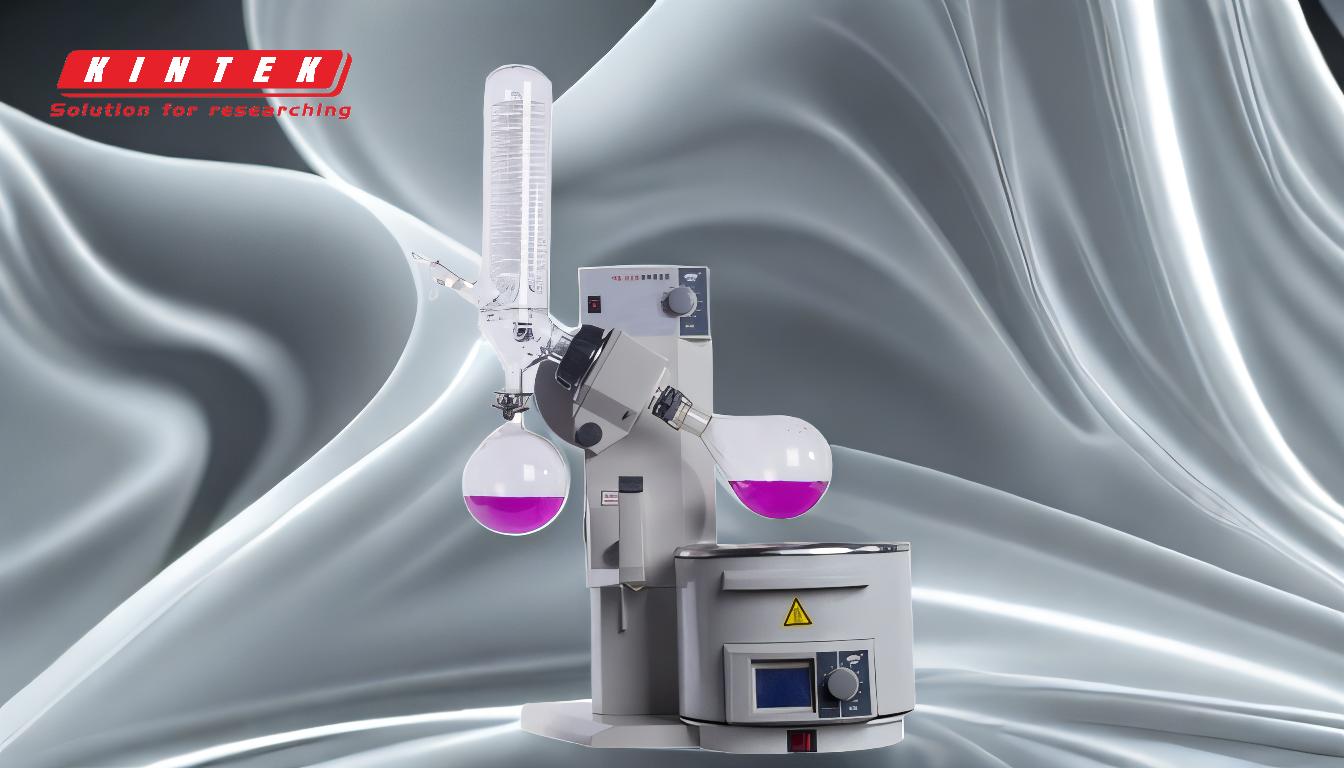A rotary evaporator, or rotovap, removes solvents through a combination of reduced pressure, controlled heating, and condensation. By operating under vacuum conditions, the boiling point of the solvent is significantly lowered, allowing it to evaporate at a much lower temperature than its standard boiling point. The solvent is placed in a rotating flask, which increases the surface area for evaporation, and is heated in a water or oil bath. The solvent vapors are then condensed using a chilled condenser and collected in a separate flask, leaving behind the concentrated compound. This process is efficient, gentle, and minimizes the risk of thermal degradation.
Key Points Explained:

-
Principle of Reduced Pressure and Lowered Boiling Point:
- The rotovap operates under vacuum conditions, which reduces the pressure inside the system.
- Lowering the pressure decreases the boiling point of the solvent, allowing it to evaporate at a lower temperature than its standard boiling point.
- This is crucial for heat-sensitive compounds, as it prevents thermal degradation.
-
Heating and Rotation:
- The solvent is placed in a rotating flask, which is submerged in a heated water or oil bath.
- The rotation of the flask creates a thin, uniform film of the solvent on the inner walls, increasing the surface area for evaporation.
- The heating bath provides controlled thermal energy to facilitate evaporation without overheating the sample.
-
Condensation and Collection:
- The solvent vapors travel through the system and encounter a chilled condenser, often referred to as a "cold finger."
- The condenser cools the vapors, causing them to re-condense into a liquid.
- The condensed solvent is collected in a separate receiving flask, while the concentrated compound remains in the original flask.
-
Factors Influencing Evaporation Rate:
- Rotation Speed: Faster rotation increases the surface area of the solvent, speeding up evaporation.
- Bath Temperature: Higher temperatures provide more energy for evaporation but must be carefully controlled to avoid boiling the compound.
- Condenser Temperature: Lower condenser temperatures improve condensation efficiency.
- Vacuum Pressure: A stronger vacuum lowers the boiling point further, enhancing evaporation.
-
Advantages of Using a Rotovap:
- Efficiency: The process is faster than traditional evaporation methods.
- Gentle on Samples: Lower temperatures reduce the risk of degrading heat-sensitive compounds.
- Solvent Recovery: The collected solvent can often be reused, reducing waste and cost.
-
Applications:
- Commonly used in chemistry labs for concentrating solutions, purifying compounds, and recovering solvents.
- Ideal for processes requiring gentle and precise solvent removal, such as in pharmaceuticals, food science, and environmental testing.
By combining these principles and components, the rotary evaporator provides a reliable and efficient method for solvent removal, making it an indispensable tool in many scientific and industrial settings.
Summary Table:
| Key Aspect | Description |
|---|---|
| Principle | Operates under vacuum to lower solvent boiling points, preventing thermal degradation. |
| Heating & Rotation | Rotating flask increases surface area; water/oil bath provides controlled heat. |
| Condensation & Collection | Chilled condenser re-condenses vapors; solvent is collected separately. |
| Evaporation Rate Factors | Rotation speed, bath temperature, condenser temperature, and vacuum pressure. |
| Advantages | Efficient, gentle on samples, and enables solvent recovery. |
| Applications | Used in chemistry labs, pharmaceuticals, food science, and environmental testing. |
Discover how a rotary evaporator can optimize your lab processes—contact us today!









